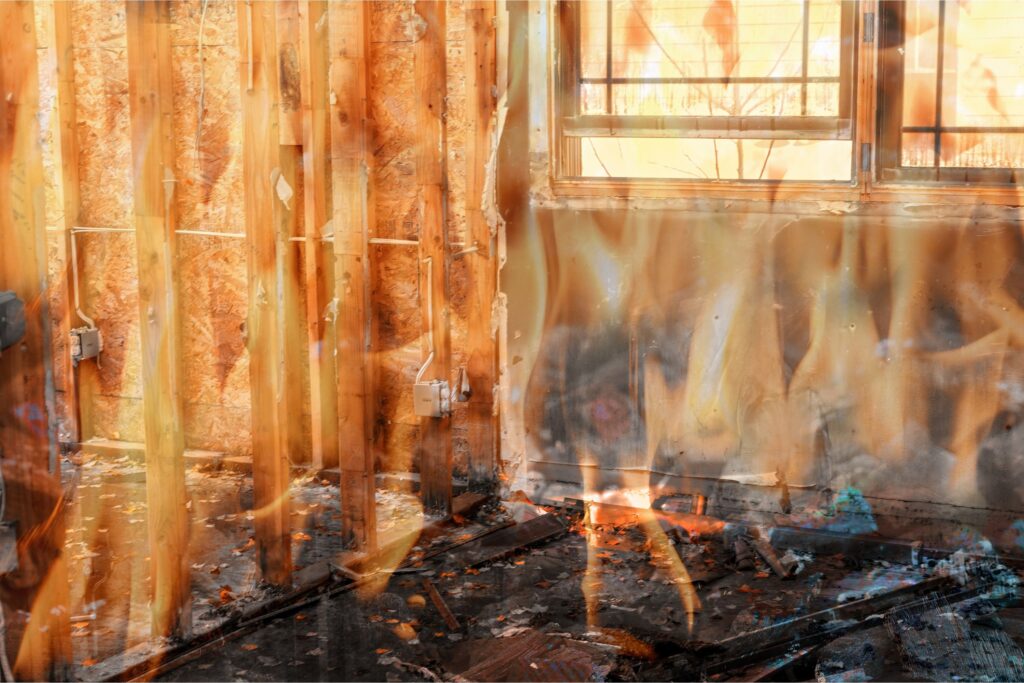According to the CDC, approximately 50 million Americans suffer from chronic pain yearly, and an increasing number of these individuals are looking for more natural, or alternative ways to relieve their discomfort. (1) As more individuals turn away from pharmaceuticals as the only option for pain management, it is important to make evident the alternatives that may help to serve the whole individual in a positive way to relieve pain.
From acupuncture, physical therapy, hypnosis, to cognitive behavioral therapy, there are a growing number of options for individuals living with chronic pain to manage their pain in more holistic ways. Among several options that may help with pain relief is the use of a sauna on a regular basis.
Sauna use is certainly not the cure-all for sufferers of chronic pain, however, if you or someone you love is living with chronic pain, then it is worth considering incorporating the use of a sauna as a portion of the treatment plan.
What Is Chronic Pain?
Chronic pain is defined by the presence of pain lasting for a minimum of three months and is divided into two primary categories: Chronic Pain and High Impact Chronic Pain. The latter of the two is defined by its impact on the individual’s ability to engage in daily life and affects roughly 6% of the American population. (1)

Essentially, 1 in 5 Americans suffer from chronic pain. While the root cause of any one person’s pain is multifaceted and varied, it’s symptoms remain debilitating for much of the American population. (2) There are times when prescription painkillers are appropriate – in post operative care, the treatment of acute injury, and end of life cases. A core issue with using prescription pain relievers for ongoing, chronic pain outside of the aforementioned circumstances is that this type of pain relief tends to be highly addictive, and it can provide additional stress on the liver. Dr Sean Mackey, PhD, MD of Stanford Medicine has recommended that those living with chronic pain use a multi-tiered management protocol. This would include addressing pain on many levels and in different ways, depending on the patient’s specific needs. (3)
Improving the lives of the many millions of Americans living with chronic pain is important, and a wide variety of treatments should be looked into under the care of a medical professional. In the face of chronic pain, the potential benefit of sauna use for these patients should not be discounted.
Can Saunas Help with Chronic Pain?
Entering into the heated cabin structure of a sauna for an allotted period of time begins a cascade of biochemical reactions in the body based on exposure to heat stress. This form of positive stress, or hormesis, on the body is the center axis of many positive health benefits. As the body heats up in response to the temperature of the sauna, as in the case of traditional saunas, or in response to the heat waves of infrared light, the body begins to orchestrate many positive changes that impact how pain is experienced during, directly after, and for the hours as well as days after the sauna has been taken.
A journal published by the National Library of Medicine entitled: “ The effects of repeated thermal therapy for patients with chronic pain”, writes of a study performed on two groups of patients in hospital that suffered from chronic pain. Both groups received holistic or ‘multidisciplinary’ treatments ranging from cognitive therapy, rehabilitation, and exercise therapy, but the second group also took regular far infrared saunas. The results showed a remarkable improvement in pain in the second group that used a sauna for up to 2 years after the research was completed:

“A far-infrared ray dry sauna therapy and post-sauna warming were performed once a day for 4 weeks during hospitalization. We investigated the improvements in subjective symptoms, the number of pain behaviors after treatment and outcomes 2 years after discharge…These results suggest that a combination of multidisciplinary treatment and repeated thermal therapy may be a promising method for treatment of chronic pain.” (4)
The study suggests that sauna alone is not the only non-pharmaceutical approach to pain management, but that the addition of daily sauna use does substantially aid in the reduction of pain in individuals living with chronic pain.
There is extensive research to suggest that regular sauna bathing improves conditions such as Fibromyalgia, and Rheumatoid arthritis. While the causes for chronic pain are many, and the experience of the pain is unique for each individual, there are some fundamental mechanisms within the body that serve to reduce the experience of pain. Below you will find several physiological functions associated with the reduction of pain as seen in the sauna user.
How Do Saunas Help To Reduce The Experience of Pain?
- Improved Circulation and Decreased Inflammation
- Higher Quality Sleep
- Relaxation of the Nervous System
- Promotes the Production of Happy Hormones: Endorphins, Serotonin, and Oxytocin
Improved Circulation and Decreased Inflammation
When circulation is improved, inflammation, in most cases, is decreased. Inflammation can cause the experience of pain and substances or activities that reduce inflammation, can also have the effect of reducing pain. When the internal temperature of the body rises during a sauna session the cardiovascular system is engaged, and as the heart begins to pump at higher rates it encourages greater blood flow, not only through the heart but also to the extremities of the body.
Improving circulation by intentionally heating the body in a sauna, it is possible to reduce inflammation, and this is particularly positive for anyone unable to engage in regular exercise. The improved circulation experienced as a result of sauna use is one of the leading causes for a reduction in pain in sauna users.
Higher Quality Sleep
Dr. Sean Mackey, Chief of the Division of Pain Medicine and Professor of Neurology at Stanford university explains that there is a direct link between sleep and the pain in individuals living with chronic pain. (3) Top on the index of importance for these patients is to ensure that the best possible sleep is acquired. As those living with chronic pain know, finding restful sleep can be quite elusive. Therefore whatever measures that can be taken to improve sleep ought to be acted upon.

Saunas, particularly when taken in the evening, help to align the body to its natural circadian rhythm, as well as contribute to the temporary changes necessary to find sleep. By artificially elevating the body’s temperature before bed, it is possible to encourage the dropping of internal temperature for the process of falling asleep.
Relaxation of the Nervous System
While saunas rely on the process of heat stress to create a wellspring of positive biochemical changes in the body, this positive stress (hormesis), ultimately leads to feelings of relaxation after the sauna has been completed. By artificially stimulating the stress response in the sauna the autonomic nervous system is positively stimulated to help draw the body out of states of high stress, back into states of relaxation. When the body is operating from states of relaxation, the experience of pain is reduced, and the body is able to engage in many more naturally occurring healing mechanisms.
Promotes the Production of Happy Hormones: Dopamine, Serotonin, and Oxytocin
The use of saunas is known to promote the release of a cocktail of ‘happy’ hormones such as oxytocin, serotonin, and endorphins. In the study on chronic pain it is understood that the more joy the patient is able to have in their life, the less pain they will experience.
By elevating the mood of chronic pain patients it is possible to actually reduce the experience of pain. This is one reason why the use of cognitive behavioral therapy is used as a portion of a multidisciplinary approach to pain management.
The particularly elegant and advantageous quality of sauna use is that one session in a sauna can accomplish many goals for patients living with chronic pain. By investing 20-40 minutes a day in a sauna it may be possible to reduce inflammation, improve sleep quality, deepen states of relaxation, and release endorphins. While this one activity alone will not vanquish chronic pain, saunas do lend themselves towards a portion of any treatment plan to reduce chronic pain.
Sauna Use as a Tool for Managing Chronic Pain
Anyone living with chronic pain understands that it is a condition that needs to be managed and not cured. Saunas have been shown through rigorous research in the field of pain management to help offset the experience of pain for a multitude of reasons. If you do plan to use a sauna to help with chronic pain you will want to incorporate sauna use regularly. This means getting into the sauna 3-4 times per week for a minimum of 20 minutes (traditional saunas require less time than infrared saunas per session), to create positive long lasting change.
Consult with your physician before starting a sauna program, and consider finding a specialist who uses a multidisciplinary approach to pain management.
If you are looking for more in depth information about other forms of pain management you may want to watch the following video from Huberman Lab with the Chief of the Division of Pain Medicine at Stanford University, Dr Sean Mackey, PHD, MD.
Sources Cited:
- https://www.cdc.gov/mmwr/volumes/72/wr/mm7215a1.htm
- https://pubmed.ncbi.nlm.nih.gov/33990113/
- Dr Sean Mackey, PHD, MD Stanford School of Medicine https://www.youtube.com/watch?v=K9lORz2_XSU
- https://pubmed.ncbi.nlm.nih.gov/16088266/
- https://www.scmp.com/lifestyle/health-wellness/article/3212658/how-sauna-can-make-you-happier-and-healthier-having-one-regularly-lowers-depression-heart-attack-and
- https://pubmed.ncbi.nlm.nih.gov/33329780/
- https://pubmed.ncbi.nlm.nih.gov/33329780/















